Headache Rheumatoid Arthritis: When Rheumatoid Arthritis Gives You a Headache
What is the link between rheumatoid arthritis and headache? How can you manage headache pain when you have rheumatoid arthritis? Find the answers.
The Connection Between Rheumatoid Arthritis and Headaches
If you have rheumatoid arthritis (RA) and experience frequent headaches, you’re not alone. According to research, people with severe headaches known as migraines were at least twice as likely to also have rheumatoid arthritis. Additionally, a study found a bidirectional association between migraine and RA, meaning migraine increases the risk of RA and RA is associated with an increased risk of migraine.
The exact connection between RA and headache isn’t entirely clear, but it’s believed that systemic inflammation plays a role, at least when it comes to migraine and RA. Researchers have also theorized that the underlying mechanism may have to do with dysfunction of the serotonergic system, which involves the neurotransmitter serotonin.

Rheumatologist Eric Ruderman, MD, notes that people with RA who have involvement of the cervical spine — the neck region — may also experience headaches related to their RA.
Managing Headache Pain with Rheumatoid Arthritis
Dealing with headache pain when you have RA can be challenging, as you may already be taking a variety of medications to manage your RA symptoms. It’s important to be careful when adding additional pain medications to avoid potentially harmful interactions.
Dr. Ruderman advises sticking with acetaminophen for average headaches, rather than popping aspirin, ibuprofen, or naproxen (also known as NSAIDs) on top of any prescription NSAID medications you may be taking for your RA. Combining these medications can increase the risk of side effects that harm the kidneys and gastrointestinal tract.
For people experiencing migraine and RA, medications known as biologics can be safely used to treat both conditions, according to CreakyJoints.
Other Tips for Managing Headaches with Rheumatoid Arthritis
In addition to medication management, there are other strategies that can help alleviate headache pain when you have RA:
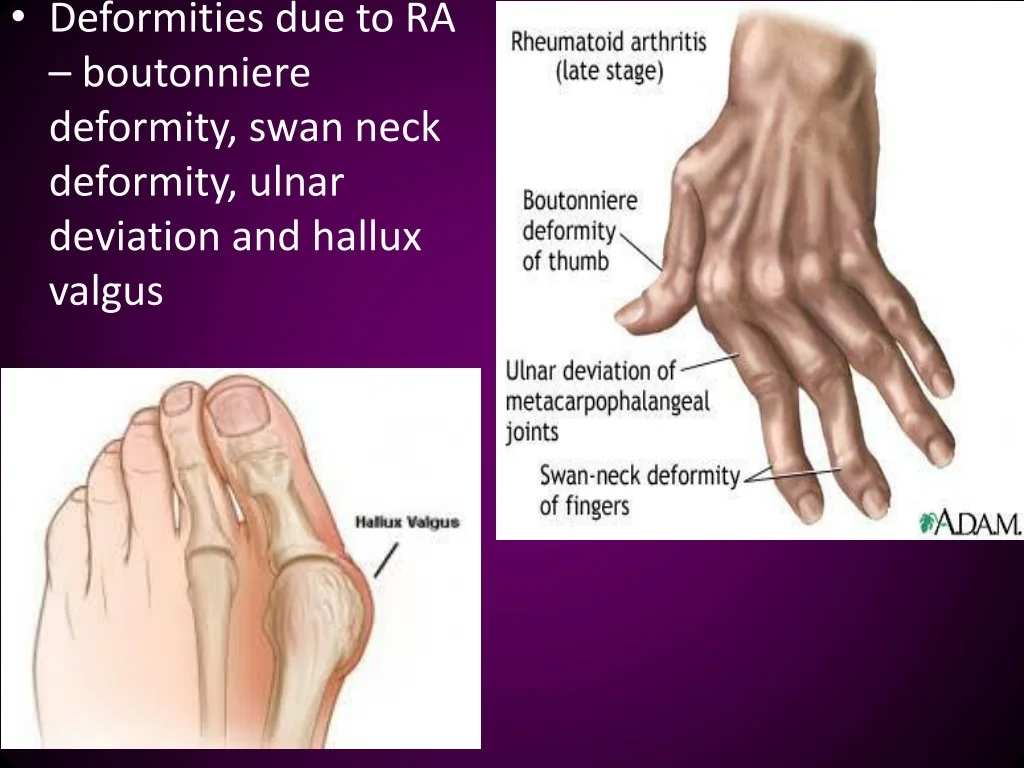
- Review your RA treatment: If your headache is persistent, talk to your rheumatologist to ensure it’s not a side effect of your RA treatment or a new symptom, especially if you suspect your shoulders or neck might be affected by RA.
- Manage stress: Stress can be a trigger for headaches, so try stress management techniques like exercise, deep breathing, or meditation.
- Stay hydrated: Dehydration can contribute to headaches, so be sure to drink enough fluids throughout the day.
- Get enough sleep: Poor sleep quality can lead to more headaches, and RA pain can interfere with sleep. Let your doctor know if you’re having trouble sleeping.
- Quit smoking: Smoking can increase the sensitivity of pain receptors in the brain, decrease blood flow, and reduce the effectiveness of pain medication, all of which can contribute to headaches.
The Impact of Rheumatoid Arthritis on Quality of Life
Rheumatoid arthritis can be a challenging condition to manage, and the addition of frequent headaches can significantly impact a person’s quality of life. If your headaches are interfering with your daily activities and not responding to over-the-counter pain medication, it’s important to discuss them with your doctor.
/optic-neuritis-multiple-sclerosis-symptom-2440807_v2-4193b934b27d43ac834a7518181aa96e.png)
By working closely with your healthcare team to manage both your RA and any associated headaches, you can find ways to reduce pain and improve your overall well-being.
Preventing Joint Damage with Rheumatoid Arthritis
In addition to managing headaches, it’s important for people with rheumatoid arthritis to focus on preventing joint damage. Exercise, a healthy diet, and other healthy habits can all play a role in protecting your joints and reducing inflammation.
By taking a comprehensive approach to managing your rheumatoid arthritis, you can minimize the impact of this chronic condition on your overall health and quality of life.
Finding the Best Cities for Rheumatoid Arthritis
The location where you live can also play a role in managing rheumatoid arthritis. Factors like abundant sunshine, good transportation, and a low-stress lifestyle can all contribute to a more favorable environment for those living with RA.
Researchers have identified several top cities that offer a range of amenities and resources that can benefit people with rheumatoid arthritis, from access to quality healthcare to opportunities for outdoor recreation and stress reduction.

Improving Sleep with Rheumatoid Arthritis
Finally, getting good quality sleep is crucial for managing inflammation and reducing the symptoms of rheumatoid arthritis. A range of sleep problems are often associated with RA, but there are various tips and strategies that can help you get the rest you need.
From adjusting your sleep environment to practicing relaxation techniques, implementing sleep-promoting habits can go a long way in supporting your overall health and well-being when living with rheumatoid arthritis.
When Rheumatoid Arthritis Gives You a Headache
If you have rheumatoid arthritis (RA) and experience frequent headaches, you’re not alone. According to one study, published in the Journal of Headache and Pain, people with severe headaches known as migraines were at least twice as likely to also have rheumatoid arthritis.
And a study published in 2021 in the journal BMJ Open found a bidirectional association between migraine and RA; that is, migraine increases the risk of RA and RA is associated with an increased risk of migraine.
Headaches, not necessarily migraine, could also be a result of how RA affects your body. Rheumatologist Eric Ruderman, MD, a professor of medicine at the Feinberg School of Medicine at Northwestern University in Chicago, notes that people with RA who have involvement of the cervical spine — the neck region — may have headaches related to RA.
What’s the Link Between Rheumatoid Arthritis and Headache?
The exact connection between RA and headache isn’t clear, though it’s believed that systemic inflammation plays a role, according to research — at least when it comes to migraine and RA. Researchers have also theorized that the underlying mechanism may have to do with dysfunction of the serotonergic system, which involves the neurotransmitter serotonin, according to a research review published in the Journal of Neuroinflammation.
Researchers have also theorized that the underlying mechanism may have to do with dysfunction of the serotonergic system, which involves the neurotransmitter serotonin, according to a research review published in the Journal of Neuroinflammation.
Managing Headaches and RA Pain
What’s the best way to manage headache pain when you have RA? Depending on your RA treatment plan, you could already be taking what seems like a small pharmacy of medications. It is important to make sure that you avoid interactions between the medications you take for RA and anything you want to take for a headache.
“If you start popping aspirin, ibuprofen, or naproxen [also known as an NSAID] on top of a prescription nonsteroidal anti-inflammatory drug [also an NSAID], you are overdoing it,” warns Dr. Ruderman. These medications can interact with each other and cause side effects that harm the kidneys and gastrointestinal tract. He advises sticking with acetaminophen for your average headache.
For people experiencing migraine and RA, medications known as biologics can be safely used to treat both conditions, notes CreakyJoints.
Other tips for responding to a headache when you have RA:
- Question your RA treatment. If you’ve taken Tylenol several days in a row and your headache is sticking around, you might want to talk to your rheumatologist to make sure that it’s not a side effect of your treatment or a new symptom (especially if you suspect that your shoulders or neck might be affected by rheumatoid arthritis).
- Consider your stress level. One possible reason that people with complicated health problems like RA also have headaches is stress. Stress management techniques, including appropriate exercise, deep breathing, or meditation, can help cut back on headaches as well.
- Stay hydrated. Independent of RA, you can get headaches if you don’t drink enough fluids during the day. You probably know how important it is to care for yourself, but even the most dedicated patient can forget to drink water when life gets busy.

- Get enough sleep. People who don’t get high-quality sleep may also experience more headaches, according to the American Migraine Foundation. Because RA pain can interfere with sleep, it may also contribute to headache pain. If you are having a hard time sleeping, let your doctor know. Likewise, any caffeine you may be relying on to get over fatigue can also contribute to headaches.
- Quit smoking. You likely already know that smoking may worsen RA. It can also cause or worsen headaches. According to Cleveland Clinic, nicotine in cigarettes and other forms can give you a headache by increasing the sensitivity of pain receptors in the brain, decreasing blood flow to the brain, and reducing the effectiveness of pain medication.
Rheumatoid arthritis can be tough enough at times — you certainly do not need headache pain on top of everything else you are managing. If your headaches interfere with your quality of life and are not responding to acetaminophen, it’s time to talk to your doctor.
Additional reporting by Deborah Shapiro.
8 Ways to Prevent Rheumatoid Arthritis Joint Damage
Rheumatoid arthritis can leave joints feeling painful and stiff. Find out how exercise, a healthy diet, and other healthy habits can help.
By Diana Rodriguez
7 Top Cities for People With Rheumatoid Arthritis
Abundant sunshine, good transportation, and a low-stress lifestyle are just a few key qualities that help determine which cities are rheumatoid arthritis…
By Beth W. Orenstein
How to Sleep Better With Rheumatoid Arthritis
A range of sleep problems are related to rheumatoid arthritis. These tips can help you get good quality sleep — which is important for managing inflammation…
By Christine Bahls
How Rheumatoid Arthritis Can Affect All Parts of Your Body
Rheumatoid arthritis affects the body beyond joint pain — your heart, lungs, skin, vision, bone health, and more. Learn about symptoms, complications,…
Learn about symptoms, complications,…
By Meryl Davids Landau
Rheumatoid arthritis, headaches, and dizziness: Is there a connection?
Rheumatoid arthritis (RA) is an autoimmune disease that can cause headaches. Some RA treatments and complications can also cause dizziness.
RA mainly targets the synovial tissue that lines the joints, and the primary symptoms are joint pain and swelling. But RA can also cause a range of other symptoms, including headaches.
In this article, we look at the links between headaches, dizziness, and RA. We also explore how to treat and manage these issues.
RA is an autoimmune disease that causes inflammation and swelling. While these issues primarily affect the joints, they can develop in organs, including the brain.
One 2018 study examined how RA-related chronic inflammation affects the brain and found a link between inflammation and changes in brain connectivity patterns. This could lead to headaches.
This could lead to headaches.
Meanwhile, RA can cause cervicogenic headaches, which result from a problem in the spine of the neck.
Cervicogenic headaches may occur when RA damages the synovial joint C1-C2 in the upper spine. A person who experiences these headaches tends to have pain radiating from the neck to the back of the head.
RA can also cause vasculitis, which is inflammation of blood vessels. This swelling can limit blood flow and lead to brain, nerve, and spinal cord damage.
When vasculitis affects the central nervous system, people may experience:
- chronic headaches
- muscle weakness
- confusion
- vision problems
- pain
- a loss of sensation
Nervous system vasculitis can also lead to brain aneurysms, brain swelling, seizures, and blood clots.
In addition, a person with RA may have a higher risk of developing another issue that causes headaches.
As the Centers for Disease Control and Prevention (CDC) point out, people with RA are more likely to develop fibromyalgia, which causes:
- headaches
- migraine headaches
- memory and concentration issues
- difficulty sleeping
- depression
- anxiety
- fatigue
- pain and stiffness
And a 2017 study involving 58,749 participants suggests that people with migraine headaches have a higher risk of developing RA.
Migraine symptoms include:
- sensory changes, such as flashing lights in the field of vision
- one-sided head pain
- nausea and vomiting
- sensitivity to light and sound
Some RA treatments can cause headaches. For instance, aggressive corticosteroid use could trigger headaches and fatigue.
Doctors often prescribe disease-modifying antirheumatic drugs, sometimes called DMARDs, to treat RA. These drugs help slow the progression of the disease, but some can cause headaches, including:
- anakinra (Kineret)
- cyclosporine
- sulfasalazine (Azulfidine)
- hydroxychloroquine (Plaquenil)
While nonsteroidal anti-inflammatory drugs (NSAIDs) — such as ibuprofen (Advil) — can help relieve mild headache pain, side effects of NSAID use are headaches and dizziness.
Also, there is a small risk that a person might get rebound headaches from taking NSAIDs. These are also called “medication overuse headaches. ”
”
Several conditions can cause headaches, and some can present similarly to RA. They can be serious, and anyone who may have symptoms should receive medical attention.
For example, infectious arthritis — also known as septic arthritis or reactive arthritis — can cause:
- a fever
- headaches
- chills
- weakness
- joint pain and swelling
Also, several autoimmune diseases other than RA can cause headaches, such as Lyme disease.
When the headache stems from migraine, try:
- avoiding triggers, which vary from person to person, but often include caffeine and alcohol
- having a steady eating and sleeping routine
- exercising regularly
- practicing stress-management techniques
Because some headaches may stem from NSAID use, it may help to take a break from these medicines.
If headaches result from RA-related issues of the head and neck, try:
- using relaxation techniques, such as yoga and deep breathing
- following an exercise routine recommended by a physical therapist
- improving sleep habits
- going to therapy, for people with depression
- taking NSAIDs as recommended
Below are some treatments that a doctor might recommend for RA-related headaches.
RA drugs
Certain RA medications, including those that suppress the body’s response to tumor necrosis factor (TNF), called TNF inhibitors, can help alleviate fatigue and other brain-related symptoms of RA.
Steroids
These are the primary treatment for vasculitis because they have a strong anti-inflammatory effect.
Nerve blocks
These are a treatment for cervicogenic headaches. They target nerve pain.
Pulsed radiofrequency therapy
One 2015 study found that pulsed radiofrequency therapy was an effective option for certain people with RA. These people had head and neck pain resulting from C2 nerve compression.
Migraine headache treatment
If a person has migraine headaches, treatment options are either acute or preventive. Acute treatments include:
- over-the-counter NSAIDs
- triptans
- ergot derivatives
Preventive options include:
- antidepressants
- anticonvulsants
- beta-blockers
- anti-calcitonin gene-related peptide injections (anti-CGRPs)
Physical therapy
Physical therapy is a key treatment for cervicogenic headaches. Massage and specific exercises can help treat this type of pain.
Massage and specific exercises can help treat this type of pain.
A person with RA may develop vasculitis. This can cause headaches that do not go away, and it requires prompt medical attention.
It can cause serious complications in the brain, including a burst aneurysm or a stroke.
Symptoms of a burst aneurysm include:
- a severe headache
- vision issues
- nausea and vomiting
- neck stiffness
- seizures
- light sensitivity
- loss of consciousness
Symptoms of a stroke include:
- weakness or numbness on one side of the body, including one side of the face or one arm or leg
- confusion
- difficulty speaking
- difficulty understanding speech
- trouble seeing
- a severe headache
- difficulty walking
- dizziness
Both are medical emergencies.
Anyone with RA and chronic migraine headaches that interfere with daily activities should make an appointment with a neurologist.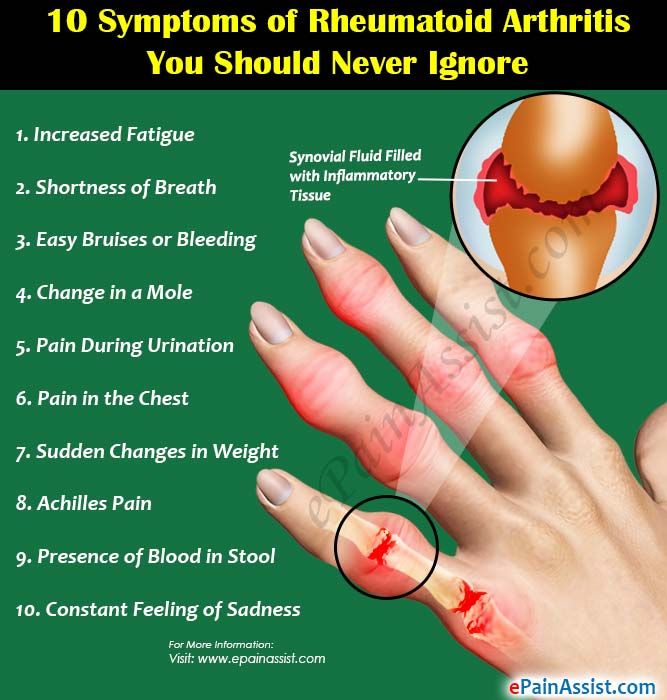 They can confirm the migraine diagnosis and find an effective treatment.
They can confirm the migraine diagnosis and find an effective treatment.
While there is no cure for RA, it is possible to manage the symptoms — even severe headaches — and slow the disease’s progression.
If headaches result from a specific RA medication, there may be other effective options that do not have this side effect.
Anyone with RA and migraine headaches should speak with a doctor about the best approach. There is no cure for migraine, but emerging treatments have shown promise in minimizing symptoms.
Receiving prompt treatment for RA can help prevent complications of the disease — and avoiding complications such as vasculitis and brain inflammation may prevent headaches.
Preventive medications for migraine are also available. Anti-CGRPs are the newest option.
People with RA may develop headaches that are unrelated to the disease. Approximately 50% of adults worldwide have had at least one headache in the last year.
Headaches can also result from an RA treatment or complication. In addition, a person with RA may have a higher risk of another issue, such as fibromyalgia, that causes headaches.
In addition, a person with RA may have a higher risk of another issue, such as fibromyalgia, that causes headaches.
Meanwhile, dizziness can also result from some RA treatments and complications. Many treatments for these issues are available, and a doctor can provide specific advice.
Receiving the right course of RA treatment early can help slow the progression of the disease and reduce the risk of complications, including those that cause headaches.
Rheumatoid arthritis
Rheumatoid arthritis (RA) is a systemic autoimmune inflammatory disease of the connective tissue of the joints. Pathological processes lead to the development of irreversible changes. One or more joints may be affected. As a rule, the small joints of the hands and feet, as well as the knee, elbow, jaw, hip and joints of the cervical spine are affected.
Tests
Rheumatoid factor (RF) IgA class
7 days (except Saturday, Sunday)
from 990 ₽
Add to cart
As the disease progresses, the joints lose their mobility, and the patient’s quality of life decreases. The situation is aggravated by the fact that the cause of the disease has not yet been established. It is not yet possible to stop the process. In total, up to 1% of the population is affected by rheumatoid arthritis in the world, of which 3/4 are women. The average age of disease onset is 40 years. The disease manifests itself during a period of severe emotional stress, under the influence of adverse environmental conditions, after an injury, an infection. RA is characterized by early disability, in 70% of cases. Among the main causes of death are infectious complications and renal failure.
The situation is aggravated by the fact that the cause of the disease has not yet been established. It is not yet possible to stop the process. In total, up to 1% of the population is affected by rheumatoid arthritis in the world, of which 3/4 are women. The average age of disease onset is 40 years. The disease manifests itself during a period of severe emotional stress, under the influence of adverse environmental conditions, after an injury, an infection. RA is characterized by early disability, in 70% of cases. Among the main causes of death are infectious complications and renal failure.
Causes of rheumatoid arthritis
Currently, there is no reliable data on the causes of the development of the disease. There are several most likely versions supported by most of the medical community. The most popular of them is that RA causes several factors that are present in the patient’s history at the same time.
- Genetic predisposition to autoimmune disorders.

- The presence of antigen class MHC II (noted in most patients).
- Infectious agents: paramyxoviruses, hepatoviruses, retroviruses.
- The presence of antibody titers to the Epstein-Barr virus (found in 80% of patients).
Thus, the risk of developing rheumatoid arthritis is higher in women aged 35 to 40 years and older. Increases the chances of having close relatives with a similar diagnosis, as well as past illnesses such as measles, hepatitis B, lichen, herpes, mumps.
Any changes in the immune system are capable of activating the pathological process, in which an attack on one’s own connective tissue begins. Among the trigger factors are frequent hypothermia, hyperinsolation (sunstroke), prolonged intoxication, viral and bacterial infections. Medications, disruption of the endocrine glands, a prolonged state of stress and depression can affect.
Development of rheumatoid arthritis
When exposed to one or more factors in the body, an inadequate response of the immune system is triggered. Defender cells – lymphocytes stop diagnosing and destroying foreign microorganisms, their own healthy cells become their target. Substances are produced that cause erosive-destructive damage to the synovial membrane of the joints.
Defender cells – lymphocytes stop diagnosing and destroying foreign microorganisms, their own healthy cells become their target. Substances are produced that cause erosive-destructive damage to the synovial membrane of the joints.
RA moves through the following stages:
- Synovitis. Cells of tissue origin (synoviocytes) begin to perform the function of macrophages, i.e., digest the remains of dead cells and foreign particles. As a result, pro-inflammatory cytokines are produced that cause the activation of T-helper cells – cells that stimulate enhanced immune function.
- Osteoporosis. Reduced bone density is caused by activated macrophages and monocytes through the production of pro-inflammatory cytokines, including IL-1. This cytokine activates osteoclasts, which dissolve and break down mineral compounds and collagen.
- composition of blood and synovial fluid changes. The level of plasma cells that produce immunoglobulins increases.
 The concentration of IgM and IgG to the altered Fc site of IgG is growing (rheumatoid factors).
The concentration of IgM and IgG to the altered Fc site of IgG is growing (rheumatoid factors). - Proliferative stage. At this time, pathological processes cause damage to cartilage and bones. The capillaries of the synovial tissue grow. Synoviocytes lead to the formation of pannus, an aggressive granulation tissue prone to tumor-like growth with penetration into the cartilage and the articular part of the bone.
The last, proliferative stage is characterized by the formation of erosions. Without treatment, these processes can occur after a few months from the onset of the disease. Strengthening angiogenesis promotes the germination of blood vessels in the cartilage, penetration deep into the cartilage tissue of bacteria.
Classification
According to ICD-10, the disease is systematized into the following groups:
1. Seropositive RA:
- Felty syndrome.

- RA with retraction of other organs and systems.
- unspecified forms.
2. Youth RA.
3. Other RA:
- seronegative type.
- Still’s disease.
- Rheumatoid bursitis.
- Rheumatoid nodule.
- Other specified and unspecified arthritis.
According to clinical manifestations, the disease is divided into the primary stage (less than 6 months have passed since the onset of the disease), early (from 6 months to a year), advanced (from 1 year) and late (more than 2 years). Rheumatoid arthritis is distinguished by the degree of loss of functionality, immunological factors, the activity of the course of the disease, and instrumental characteristics.
For physicians, immunological characteristics are of the greatest importance. The presence of rheumatoid factor in the blood or the presence of anti-CCP (seropositive and seronegative RA). The results of analyzes that reveal these values make it possible to correctly plan therapy.
The results of analyzes that reveal these values make it possible to correctly plan therapy.
Symptoms
The initial stage of the disease has practically no pronounced symptoms. Over time, there is a slight stiffness in the affected joints. As a rule, it occurs in the morning, as the secretion of glucocorticoids decreases. It is difficult for the patient to move, movements are inhibited. Sometimes you need help getting up. But after 30 minutes everything is back to normal. The clinic can be deployed over several months or even years, gradually strengthening.
Primary symptoms should also include:
- periodic joint pain;
- loss of appetite;
- increased fatigue.
The second stage is characterized by rapid cell division, compaction of the synovial membrane. Symmetric swelling of the joints is noted, the skin in the affected areas has an elevated temperature.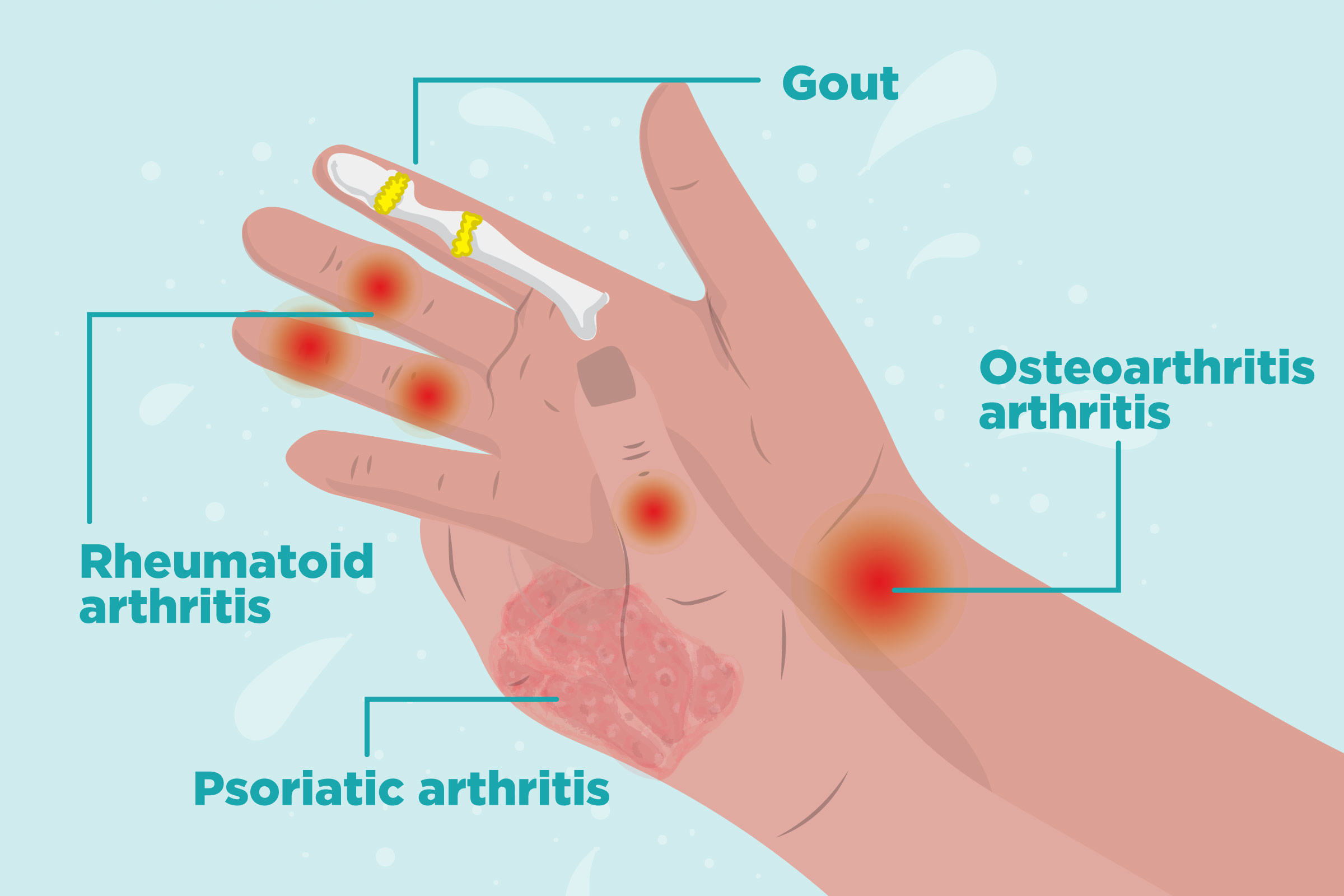 There is also sudden pain, aggravated by active movement. To completely pass they need the same rest time that was spent on movement.
There is also sudden pain, aggravated by active movement. To completely pass they need the same rest time that was spent on movement.
The third stage is the active phase of inflammation involving cartilage and bones. Affected joints begin to deform, which leads to increased pain and loss of motor function.
Rheumatoid arthritis often has concomitant joint diseases, and blurred symptoms make differential diagnosis difficult. Among the combined more useful are rheumatism, osteoarthritis and other systemic connective tissue pathologies. The only specific manifestation of rheumatoid arthritis can be called nodules, the so-called subcutaneous formations on the extensor surface. They can be found on palpation.
Extra-articular manifestations of RA
Pathological processes caused by rheumatoid arthritis occurring outside the joints occur in a third of patients. These symptoms also complicate the diagnosis and influence the choice of treatment tactics. Among them:
Among them:
- Skin vasculitis (ulcerative necrotic, livedoangiitis, nail bed infarcts).
- Sjögren’s syndrome (damage to the salivary and lacrimal glands).
- Eye lesions (scleritis – inflammation of the deep layer of the eye, episcleritis – inflammation of the connective tissue of the eye).
- Interstitial lung disease (inflammation of the alveoli, lung capillaries and other tissues).
As a result of inflammation that accompanies rheumatoid arthritis, pathologies can occur in the cardiovascular, respiratory, and nervous systems. The most serious complication is AA amyloidosis, which causes kidney failure.
Separately, it is worth highlighting various associated diseases that are not directly caused, but associated with RA. These are coronary heart disease, thromboembolism, anemia, neuropsychiatric disorders, among which depression deserves attention. Like any other autoimmune disease with chronic inflammation, rheumatoid arthritis affects the psychological state. The patient is recommended to undergo psychological courses and a comprehensive, comprehensive examination.
The patient is recommended to undergo psychological courses and a comprehensive, comprehensive examination.
Diagnostics
First of all, the doctor examines the clinical criteria for rheumatoid arthritis. The disease should be suspected in patients with symmetrical polyarthritis. Important is the defeat of the wrist, II and III metacarpophalangeal joints. It is necessary to exclude hepatitis C. Pay attention to the presence or absence of changes in skin color in inflamed joints, the presence of deformities of the limbs, tenosynovitis of the flexors or extensors of the fingers. Diagnosis also includes the results of laboratory and instrumental.
Laboratory research
The tasks of the laboratory include a blood test for RF, anti-CCP, ESR, CRP. The most progressive analysis is the titer of antibodies to ACCP, anti-CCP, anti-CCP.
- RF – analysis for antibodies to human gamma globulin detects 70% of patients with RA.
 However, the indicator is not critical, since titers can be detected in other viral diseases and connective tissue pathologies. RF analysis confirms rheumatoid arthritis in combination with a positive test for ACCP.
However, the indicator is not critical, since titers can be detected in other viral diseases and connective tissue pathologies. RF analysis confirms rheumatoid arthritis in combination with a positive test for ACCP. - ACCP – test with high sensitivity up to 86%. In combination with RF titer, it indicates RA. However, it is necessary to exclude hepatitis C, since ACCP and RF titer can be with this viral infection.
Additional tests include a biochemical blood test to determine the activity of inflammation. Complete blood count to detect anemia, immunological examination to establish the presence of rheumatoid factor (IgM antibodies).
Instrumental diagnostics
- X-ray examination. In the first months of the disease, radiography can only show swelling of the soft tissues. Marginal erosions, osteoporosis, narrowing of the joint space are detected by the end of the first year of the disease or later.

- Magnetic resonance imaging. The most informative research method at the moment. It allows you to identify early signs of inflammation, detects erosion and lesions of the subchondral bone.
- The study of synovial fluid. The procedure is carried out with exudative changes in the joints, to differentiate RA from arthritis of a different nature. Indicates the development of rheumatoid arthritis clouding, yellowish color of the synovial fluid. The content of leukocytes increases to 50,000/µl.
Important in the diagnosis is the exclusion of similar diseases: microcrystalline arthritis, sarcoidosis, reactive and psoriatic arthritis, systemic lupus erythematosus, osteoarthritis and other diseases.
Treatment
Therapy is aimed at curbing the development of the disease, reducing inflammation and preventing joint deformities and loss of their functionality. The following medicines are prescribed:
- Non-steroidal anti-inflammatory substances.
 They reduce pain to some extent, slow down the progression of RA. May include inhibitors and blockers for IL-1, IL-6, TNF-alpha. They do not block the development of erosion and disease, therefore they are used as adjuvants.
They reduce pain to some extent, slow down the progression of RA. May include inhibitors and blockers for IL-1, IL-6, TNF-alpha. They do not block the development of erosion and disease, therefore they are used as adjuvants. - Glucocorticoids. Used in combination with anti-inflammatory drugs. Allow to control the development of severe monoarticular and oligoarticular symptoms. Not used on a regular basis, as they often cause unpleasant metabolic effects.
- Basic preparations. Essential drugs that can significantly slow the progression of arthritis. Courses of admission from several weeks to several months. The drugs differ in chemical composition and pharmacology. They are combined with each other to select the optimal treatment with the greatest effect. According to statistics, ⅔ of patients who have completed the course will show significant improvement, more than half of them achieve complete remission. However, one should be aware of the toxicity of these drugs.
 The doctor and the patient must weigh all the risks, conduct regular monitoring of the patient’s condition.
The doctor and the patient must weigh all the risks, conduct regular monitoring of the patient’s condition.
Thus, the main treatment includes basic drugs, especially methotrexate, biological antagonist drugs, immunomodulatory drugs. Other methods of supportive therapy include physiotherapy, therapeutic exercises, a balanced combination of physical activity and rest. Quitting alcohol and smoking can prolong a patient’s life. The curvature of the joints can be corrected with the help of surgical correction.
Forecast
Rheumatoid arthritis shortens a person’s life expectancy for a number of reasons. The risk of heart disease is doubled. This is due to the presence of chronic inflammation. Concomitant pathologies, for example, diabetes, obesity, alcoholism, can aggravate the situation.
With the development of AA amyloidosis, despite treatment, the average life expectancy of the patient is about 10 years from the onset of the disease. Without therapy, the period is calculated in several years. A common cause of death is kidney failure. On average, RA shortens life by 3 to 7 years due to the high risk of infections and gastrointestinal bleeding.
Without therapy, the period is calculated in several years. A common cause of death is kidney failure. On average, RA shortens life by 3 to 7 years due to the high risk of infections and gastrointestinal bleeding.
Drug therapy is also not perfect. It can cause concomitant diseases, become one of the factors in the development of malignant neoplasms.
The criteria for poor prognosis include:
- early (up to 4 months) x-ray changes in the joints;
- persistent increase in erythrocyte sedimentation rate;
- constant involvement of new joints;
- carriage of HLA-DR4 antigens.
About 10% of patients are doomed to severe disability with loss of self-care skills. The most severe rheumatoid arthritis occurs in women who smoke, representatives of the Caucasian race.
Benefits of laboratories JSC “SZTsDM”
In the laboratory terminals of the Northwestern Center for Evidence-Based Medicine, you can take tests to diagnose rheumatoid arthritis and other autoimmune diseases. Among the advantages of JSC “SZTsDM”:
Among the advantages of JSC “SZTsDM”:
- New modern equipment,
- Qualified and friendly staff,
- Fast availability of results and convenient ways to get them.
Laboratories are located in Pskov, Veliky Novgorod, Kaliningrad, St. Petersburg and other cities of the Leningrad region. You can take tests in any of them without reference to residence and registration.
Rheumatoid arthritis
Rheumatoid arthritis. Information for Patients
Rheumatoid arthritis is an immunoinflammatory (autoimmune) rheumatic disease characterized by chronic erosive arthritis and systemic involvement of internal organs.
Rheumatoid arthritis is a fairly common disease, in Russia it affects about 1% of the population. Both a child and an adult can get rheumatoid arthritis, but the disease mainly develops in women of active age (women get rheumatoid arthritis 2-3 times more often than men). The peak onset of the disease is 40-55 years.
The peak onset of the disease is 40-55 years.
It is still not clear to doctors what causes the disease. It is known that some people are genetically predisposed to rheumatoid arthritis, but the disease is not transmitted from parents to children. In 20-30% of patients, the disease begins after an infection, most often nasopharyngeal. At the same time, long-term searches for a specific microorganism that causes rheumatoid arthritis have not been successful, so there is no reason to consider this disease infectious. Smoking has also been shown to increase the risk of developing rheumatoid arthritis. In about a third of patients, the first symptoms appear for no apparent reason.
Despite the fact that the true cause of rheumatoid arthritis is unknown, medical scientists have been able to identify many of the underlying mechanisms of the disease. Rheumatoid arthritis disrupts the immune system. As a result, some immune cells begin to produce too many substances that cause an inflammatory response, and thereby damage their own tissues. This is a very important point that patients should understand – the basis of rheumatoid arthritis is not “lowered immunity”, but an excessive immune response. Therefore, therapy does not consist in “raising immunity”, as many people think, but in normalizing the functioning of the immune system by selectively suppressing abnormally active cells.
This is a very important point that patients should understand – the basis of rheumatoid arthritis is not “lowered immunity”, but an excessive immune response. Therefore, therapy does not consist in “raising immunity”, as many people think, but in normalizing the functioning of the immune system by selectively suppressing abnormally active cells.
Rheumatoid arthritis leads to chronic inflammation of the joints, periarticular and some other tissues and organs are affected. Therefore, rheumatoid arthritis is classified as a systemic (affecting the entire body, and not just one organ) diseases. This disease, as a rule, has a progressive course, occasionally interrupted by remissions (periods of temporary improvement). After stress, colds or hypothermia, the patient’s condition may deteriorate significantly. Over time, various complications join the damage to the joints. Damage to the heart, lungs, blood vessels and other organs can develop. In the absence of active modern treatment, almost half of patients become disabled within the first five years after diagnosis.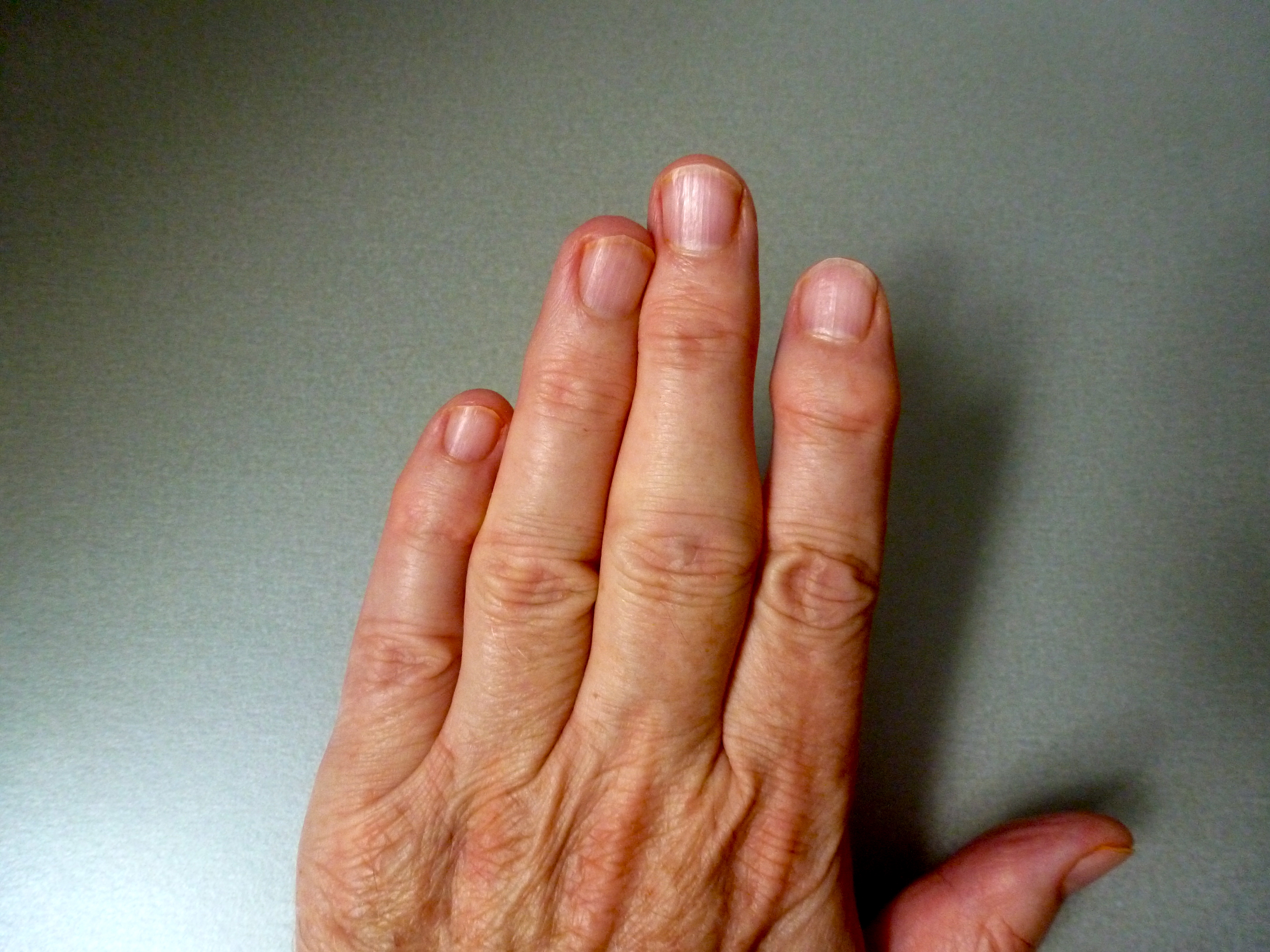 Due to rheumatoid arthritis, atherosclerosis can develop, which often leads to myocardial infarction or stroke, shortening life expectancy by 8-10 years.
Due to rheumatoid arthritis, atherosclerosis can develop, which often leads to myocardial infarction or stroke, shortening life expectancy by 8-10 years.
The main symptoms at the onset of the disease are usually pain, swelling, morning stiffness in the symmetrical joints of the hands, wrist joints, they may become hot to the touch. Over time, the foot, ankle, knee, and elbow joints may be involved in the process. In some patients, on the contrary, the joints of the legs (knee, ankle) are the first to be affected, and only then the arms. These signs are easily confused with symptoms of other joint diseases, therefore, only a rheumatologist establishes an accurate diagnosis based on a detailed clinical examination, instrumental examination and specific laboratory parameters.
Inflammation of the joint is manifested by its swelling, pain and sometimes redness. Chronic inflammation of the joint leads to the destruction of the articular cartilage and the occurrence of joint deformity, which, in turn, disrupts its function – there are pain during movement and stiffness.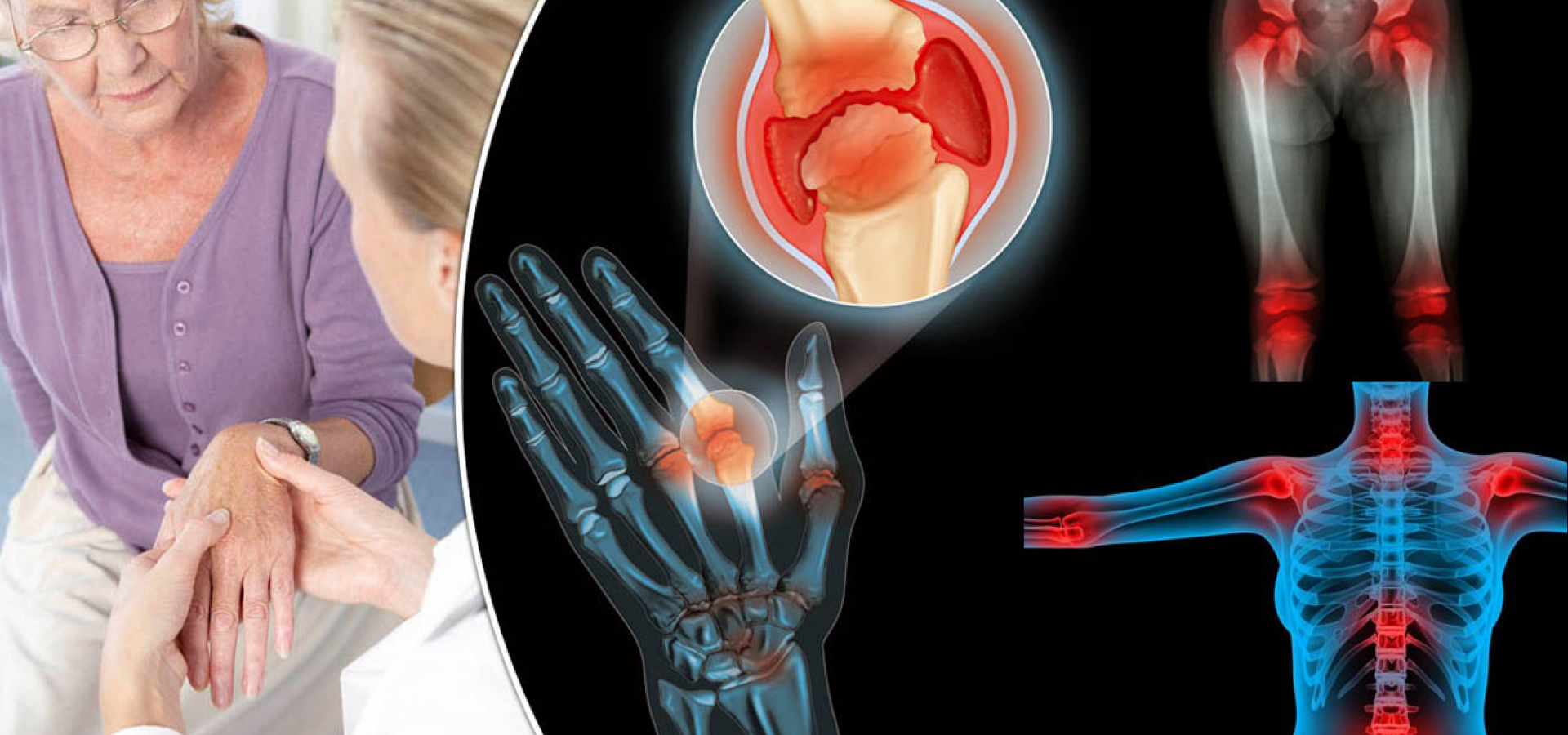
Symptoms of rheumatoid arthritis are usually persistent and do not disappear without treatment, but for a short time at the onset of the disease there may be periods of some improvement in well-being. Spontaneous remission (that is, a state of long-term significant improvement) occurs very rarely. Without treatment, an exacerbation naturally occurs, the activity of the disease increases – and the state of health worsens again. Periods of exacerbation are characterized by weakness, loss of appetite, fever, muscle and joint pain, and joint stiffness, usually most pronounced in the morning after waking up or after periods of rest. Extra-articular (systemic) manifestations of rheumatoid arthritis often develop in long-term ill patients, but sometimes occur from the very beginning of the disease. A specific symptom of rheumatoid arthritis is rheumatoid subcutaneous nodules, which most often form on the elbows, but can also appear in other places. A rare severe complication of rheumatoid arthritis is vasculitis (inflammation of blood vessels). This disease disrupts the blood supply to organs and tissues, most often vasculitis is manifested by the formation of dark necrotic areas and ulcers on the fingers and toes. Sometimes “Sjögren’s syndrome” joins rheumatoid arthritis – with this disease, the glands of the eyes and oral mucosa become inflamed, which leads to dryness of these organs. Rheumatoid inflammation of the lining of the lungs (pleura) is called pleurisy, but rarely manifests itself clinically. This is mainly detected during x-ray examination. A similar inflammation can be observed in the heart membrane (pericarditis). The lungs themselves can also become inflamed and form rheumatoid nodules.
This disease disrupts the blood supply to organs and tissues, most often vasculitis is manifested by the formation of dark necrotic areas and ulcers on the fingers and toes. Sometimes “Sjögren’s syndrome” joins rheumatoid arthritis – with this disease, the glands of the eyes and oral mucosa become inflamed, which leads to dryness of these organs. Rheumatoid inflammation of the lining of the lungs (pleura) is called pleurisy, but rarely manifests itself clinically. This is mainly detected during x-ray examination. A similar inflammation can be observed in the heart membrane (pericarditis). The lungs themselves can also become inflamed and form rheumatoid nodules.
Chronic inflammation in rheumatoid arthritis can lead to a decrease in hemoglobin in the blood – the development of anemia. Sometimes the number of leukocytes (white blood cells) rises (during exacerbations) and decreases.
Such a variety of symptoms and variants of the disease often makes diagnosis difficult, so I would like to emphasize once again: only a qualified rheumatologist can correctly establish.
Diagnosis
With the development of pain and swelling of the joints, it is necessary to contact a rheumatologist as soon as possible.
From practice, it is well known that many patients, when the first symptoms of arthritis appear, self-medicate for a long time, turn to doctors of other specialties (generalists, surgeons, traumatologists, neurologists), therefore, an accurate diagnosis is established late – after 5-6 months, or even later. During these six months, new joints are often involved in the inflammatory process, irreversible changes (erosion, contractures) are formed in them. Therefore, early referral to a rheumatologist and early initiation of therapy is the key to successful treatment. According to current recommendations, for maximum effectiveness, therapy should be started within 6-12 weeks from the onset of the first symptoms.
Rheumatologist examines joints, skin, other organs and systems. Then he prescribes a certain range of tests and other research methods – in particular, x-rays, ultrasound and others.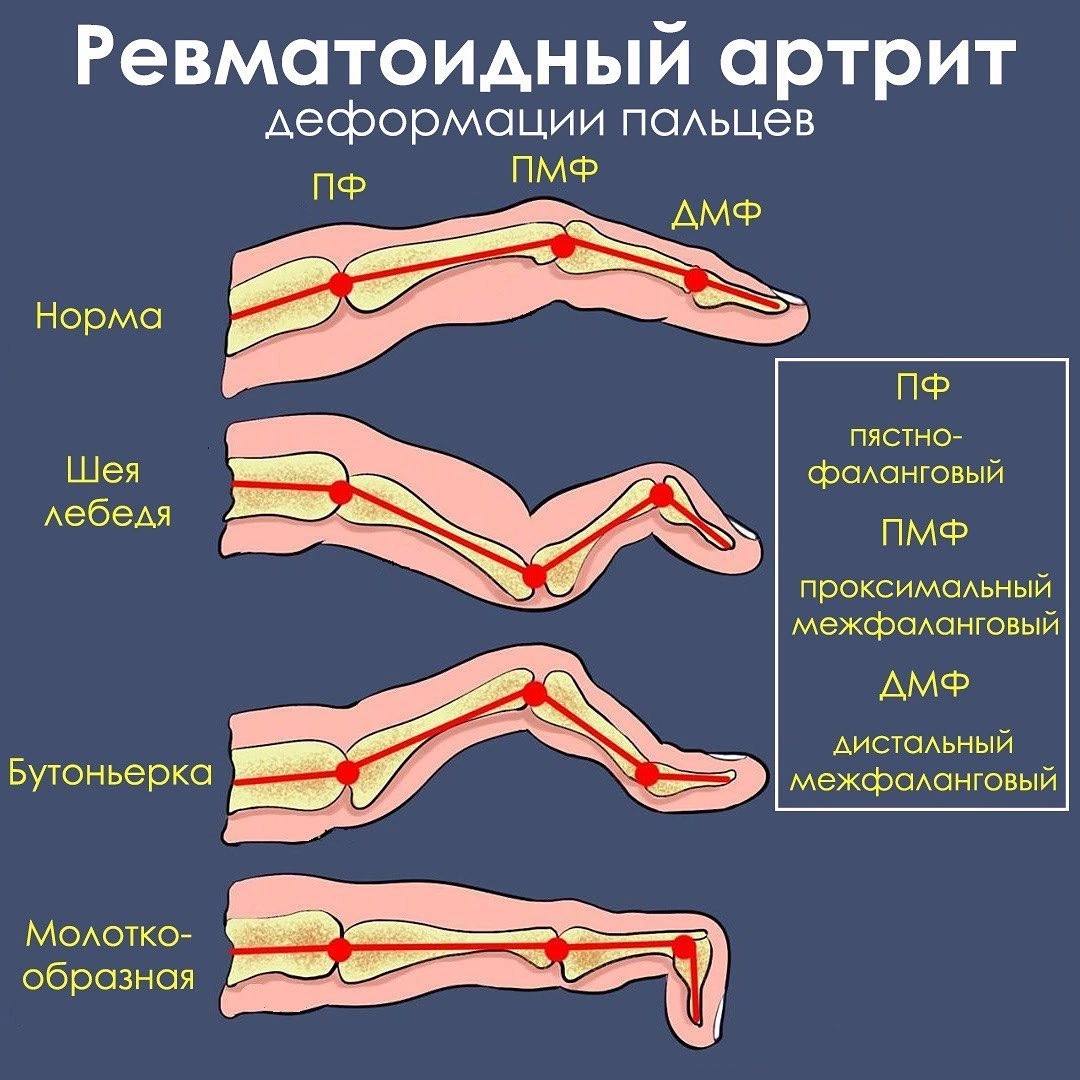 The diagnosis is made on the basis of the degree of damage to the joints, the detection of erosions of the articular surfaces during x-ray examination, the detection of rheumatoid factor in the blood serum (a special protein that appears in most patients). In the blood, the ESR, the level of fibrinogen, C-reactive protein increase.
The diagnosis is made on the basis of the degree of damage to the joints, the detection of erosions of the articular surfaces during x-ray examination, the detection of rheumatoid factor in the blood serum (a special protein that appears in most patients). In the blood, the ESR, the level of fibrinogen, C-reactive protein increase.
Unfortunately, absolutely specific (pathognomonic) signs of rheumatoid arthritis do not exist, however, if rheumatoid factor and antibodies to citrullinated proteins are detected, the likelihood of rheumatoid arthritis increases significantly. Therefore, diagnosis is always carried out on the basis of a set of data obtained during the examination, and not with the help of any single analysis or study.
In 30% of patients with suspected rheumatoid arthritis, the diagnosis cannot be clarified at the first visit to the doctor, repeated examinations and patient monitoring are required.
Medication
Medication is the main treatment for rheumatoid arthritis.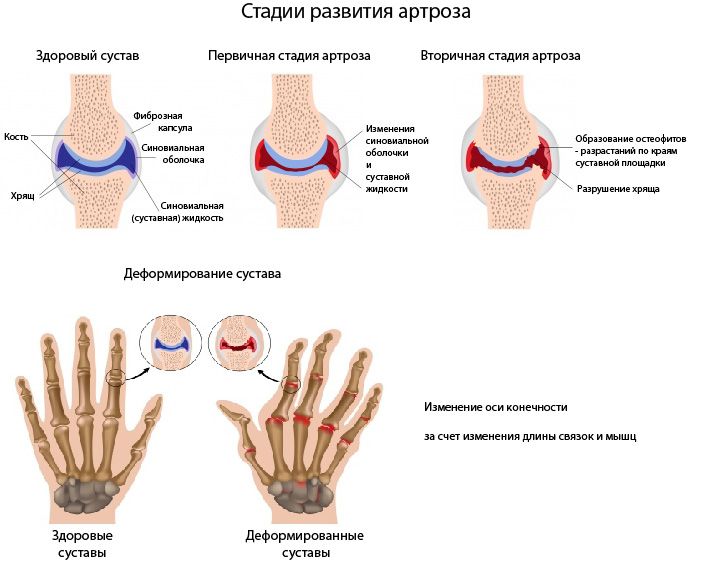 This is the only way to slow down the development of the inflammatory process and maintain mobility in the joints. All other methods of treatment – physiotherapy, diet, physiotherapy exercises – auxiliary and without drug treatment are not able to significantly affect the course of the disease.
This is the only way to slow down the development of the inflammatory process and maintain mobility in the joints. All other methods of treatment – physiotherapy, diet, physiotherapy exercises – auxiliary and without drug treatment are not able to significantly affect the course of the disease.
The main goal of treatment is to slow down and possibly stop the progression of the disease, preserve joint function and improve the patient’s quality of life. To do this, it is necessary to suppress the inflammatory process, relieve pain, prevent exacerbations and complications.
With early diagnosis and early initiation of drug therapy with modern antirheumatic drugs, more than 50% of patients can achieve clinical remission, that is, a state when there is no active inflammation in the joints, and the patient feels practically healthy. At the same time, rheumatoid arthritis is a chronic disease prone to exacerbations, therefore, to maintain the achieved success, long-term therapy with maintenance doses of drugs is required, and the question of the possibility of a complete cure is still open.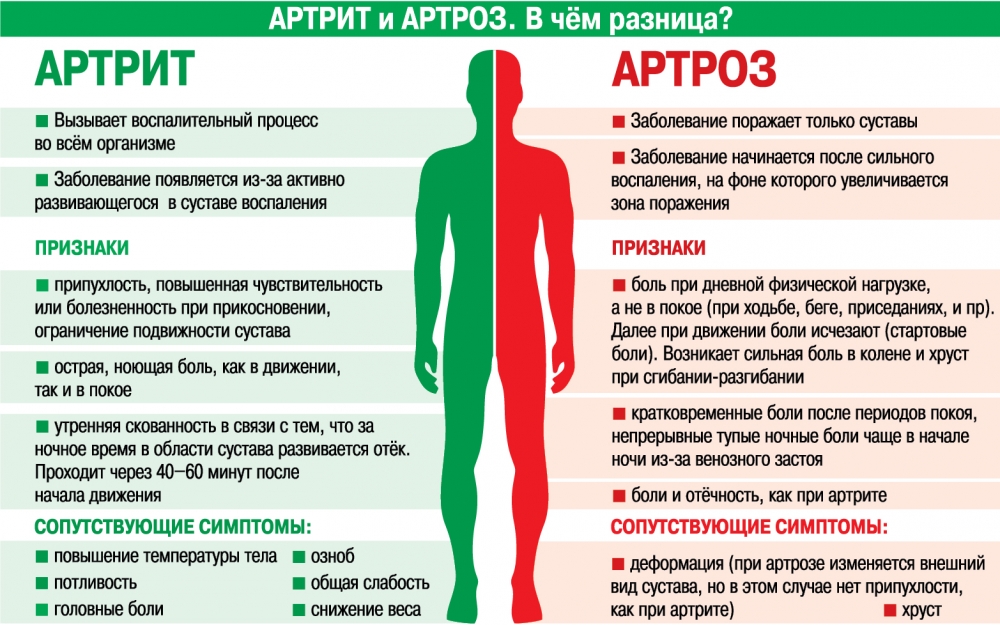
The main drugs for the treatment of RA are basic anti-inflammatory drugs. These include a large number of drugs that are diverse in chemical structure and pharmacological properties, such as methotrexate, leflunomide, sulfasalazine, etc. They are united by the ability to a greater or lesser extent and through various mechanisms to suppress inflammation and/or pathological activation of the immune system.
The most active basic anti-inflammatory drug is methotrexate, which usually begins therapy for rheumatoid arthritis. Genetically engineered biologics are usually added to methotrexate if they are not effective enough. The therapeutic effect of methotrexate develops slowly (for 1.5-2 months or longer), but it is very persistent. The maximum improvement is usually achieved by the sixth month of treatment, a good clinical effect is observed in 60-70% of patients. To improve the tolerability of treatment or achieve a faster effect, the use of a subcutaneous dosage form of methotrexate is recommended.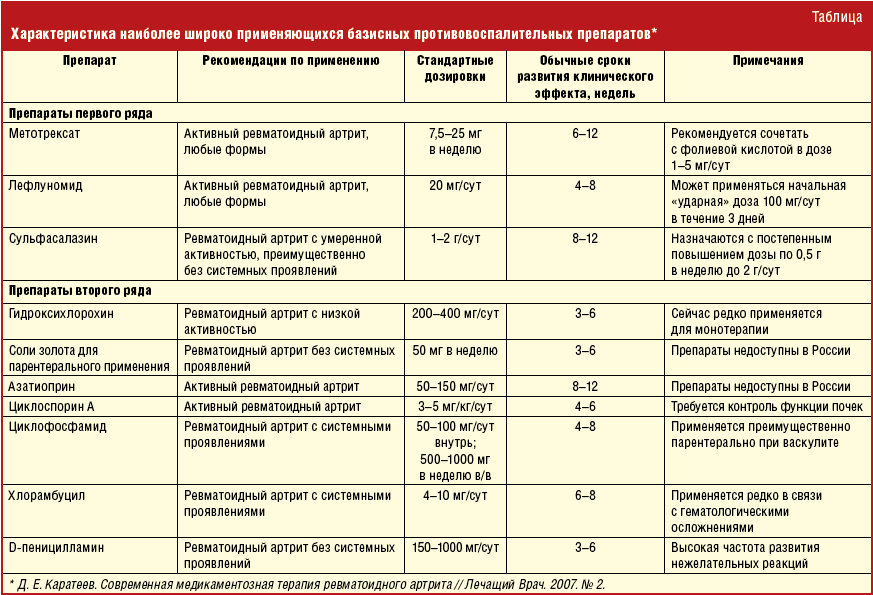 During treatment with methotrexate, it is mandatory to take folic acid at least 5 mg per week, not earlier than one day after taking methotrexate.
During treatment with methotrexate, it is mandatory to take folic acid at least 5 mg per week, not earlier than one day after taking methotrexate.
If there are contraindications to the use of methotrexate or poor tolerance of treatment, leflunomide or sulfasalazine may be prescribed.
To maintain the improvement achieved, maintenance (low) doses of these drugs should be taken by the patient for a long time (if necessary, several years).
In general, treatment with these drugs is well tolerated, but requires monitoring of blood parameters and liver function.
A modern method of treating rheumatoid arthritis is the use of both genetically engineered biological drugs and targeted synthetic basic anti-inflammatory drugs. Genetically engineered biological preparations (GIBPs, not to be confused with dietary supplements) are protein molecules obtained using the most complex biotechnologies that selectively inhibit the activity of substances (mediators) involved in the development of chronic inflammation. In Russia, several genetically engineered biological preparations have been registered for the treatment of rheumatoid arthritis. GIBPs are administered as subcutaneous injections or intravenous infusions. Currently, targeted synthetic basic anti-inflammatory drugs that inhibit the activity of Janus kinase are increasingly being used, which are prescribed in the form of tablets, but in terms of their action they are close to genetically engineered biological drugs.
In Russia, several genetically engineered biological preparations have been registered for the treatment of rheumatoid arthritis. GIBPs are administered as subcutaneous injections or intravenous infusions. Currently, targeted synthetic basic anti-inflammatory drugs that inhibit the activity of Janus kinase are increasingly being used, which are prescribed in the form of tablets, but in terms of their action they are close to genetically engineered biological drugs.
Glucocorticoid hormones can give a rapid anti-inflammatory effect. Usually, such drugs are prescribed at high disease activity in low doses (no more than 2 tablets per day), followed by a dose reduction to 1 or less tablets, or completely canceled when the effect is achieved. There is an opinion that glucocorticoid hormone therapy is dangerous, but it is generally not justified. At the same time, glucocorticoid hormones require very competent handling (for example, you cannot quickly cancel the drug), so the decision to prescribe hormone therapy is made individually for each patient. With very high disease activity, pulse therapy (administration of a high dose of hormones intravenously) can be used to relieve exacerbation.
With very high disease activity, pulse therapy (administration of a high dose of hormones intravenously) can be used to relieve exacerbation.
Nonsteroidal anti-inflammatory drugs (NSAIDs for short) are an important component of the treatment of rheumatoid arthritis. NSAIDs are prescribed to reduce pain and stiffness in the joints. NSAIDs are prescribed at an early stage of the disease, when the effect of treatment with basic anti-inflammatory drugs has not yet developed and it is necessary to control the symptoms in order to give the patient the opportunity to move, work, and take care of himself. After a full improvement is achieved during therapy with basic anti-inflammatory drugs, NSAIDs are canceled in many patients. At the same time, a significant number of patients, especially those with severe rheumatoid arthritis, are forced to continue treatment with NSAIDs for a long time due to persistent pain.
It is not uncommon for patients to start taking these medications on their own and find they work well. However, it must be borne in mind that NSAIDs cope with symptoms, but do not affect the course of the disease. In addition, they can cause stomach ulcers and gastrointestinal bleeding, high blood pressure, and other side effects. At risk are elderly patients, smokers, suffering from diseases of the gastrointestinal tract and the cardiovascular system. Therefore, to prescribe or change NSAIDs, you need to consult a rheumatologist.
However, it must be borne in mind that NSAIDs cope with symptoms, but do not affect the course of the disease. In addition, they can cause stomach ulcers and gastrointestinal bleeding, high blood pressure, and other side effects. At risk are elderly patients, smokers, suffering from diseases of the gastrointestinal tract and the cardiovascular system. Therefore, to prescribe or change NSAIDs, you need to consult a rheumatologist.
Monitoring the patient’s condition and monitoring the safety of treatment.
Treatment of rheumatoid arthritis with drugs can give very good results, but requires regular monitoring by a qualified rheumatologist.
A special system for such control has been developed. To obtain the best results of therapy, a rheumatologist periodically evaluates its effectiveness. The patient should visit the doctor at least once every 3 months at the beginning of treatment. He also has blood tests and x-rays of his joints every year so that the doctor can assess the course of the disease.
Depending on the activity of the inflammatory process and other indicators, the treatment regimen can be adjusted according to the decision of the rheumatologist (the dose of drugs is reduced or increased, drugs are added or changed, etc.). At the same time, the trusting relationship between the patient and the doctor, the understanding that treatment is a complex and serious work, often requiring effort and patience, is extremely important. After achieving a good effect from therapy against the background of maintenance doses of drugs, it is recommended to be shown to a rheumatologist at least once every six months.
The other side of the control is the assessment of indicators to ensure the safety of treatment. The safety control scheme depends on which drugs are prescribed to the patient.
Thus, when taking methotrexate or leflunomide, liver function and the number of blood cells are monitored.
When prescribing genetically engineered biological drugs, their intravenous administration is carried out in a specially equipped treatment room under the supervision of a doctor. All genetically engineered biologics and targeted synthetic DMARDs can reduce resistance to infections.
All genetically engineered biologics and targeted synthetic DMARDs can reduce resistance to infections.
For patients on long-term use of NSAIDs, gastroscopy should be performed if necessary.
Treatment restrictions apply. During therapy with methotrexate and leflunomide, it is not recommended to drink alcohol. It is advisable to avoid contact with infected patients. Most anti-inflammatory drugs are not compatible with pregnancy (it is possible after discontinuation of treatment).
There are a number of ways to improve the tolerance of certain drugs. To reduce the negative impact on the stomach, along with NSAIDs, proton pump inhibitors can be prescribed – but their use requires monitoring by a doctor. To improve the tolerability of methotrexate, the use of folic acid is recommended. When prescribing glucocorticoids, calcium preparations and other means are prescribed in parallel to prevent osteoporosis, a weakening of bone tissue that can occur with prolonged hormone therapy. Special vaccines are used to protect against infections.
Special vaccines are used to protect against infections.
Unfortunately, in many cases, patients are too apprehensive about drug therapy, believing that “chemo cures one thing, cripples another.” This is fundamentally wrong for a number of reasons. First, despite the possible occurrence of adverse reactions, the likelihood of their development is relatively low. Secondly, for most drugs, the control system is well developed (it is described in detail in the manuals and package inserts) and allows you to actively detect adverse reactions even before they become dangerous to health. Thirdly, the risk of developing complications of the disease itself is much more serious than the risk of developing adverse reactions to therapy.
Non-pharmacological treatments
In addition to medication, patients are advised to monitor their diet and exercise.
The diet of a patient suffering from rheumatoid arthritis should be complete, with sufficient protein and calcium. This is important for several reasons:
This is important for several reasons:
1) with active inflammation in the body, energy and protein consumption is increased;
2) with rheumatoid arthritis, muscle atrophies develop rapidly (dramatic weight loss
and muscle weakness) that contribute to joint deformities;
3) anti-inflammatory drugs can weaken the mucous membrane of the stomach and intestines, and the natural defense in this case is a sufficient amount of protein in the diet;
4) Complete nutrition, with sufficient content of vitamin D and calcium – prevention of osteoporosis (disturbances in the structure of bone tissue that accompanies arthritis). Preference is given to proteins of animal origin – milk, dairy products, cheese, eggs, meat, fish. Spicy foods should be avoided. Meat and fish dishes are best boiled, steamed, stewed or baked.
It is recommended to provide a diet with vegetable oils containing polyunsaturated fatty acids – this can contribute to a more favorable course of the inflammatory process.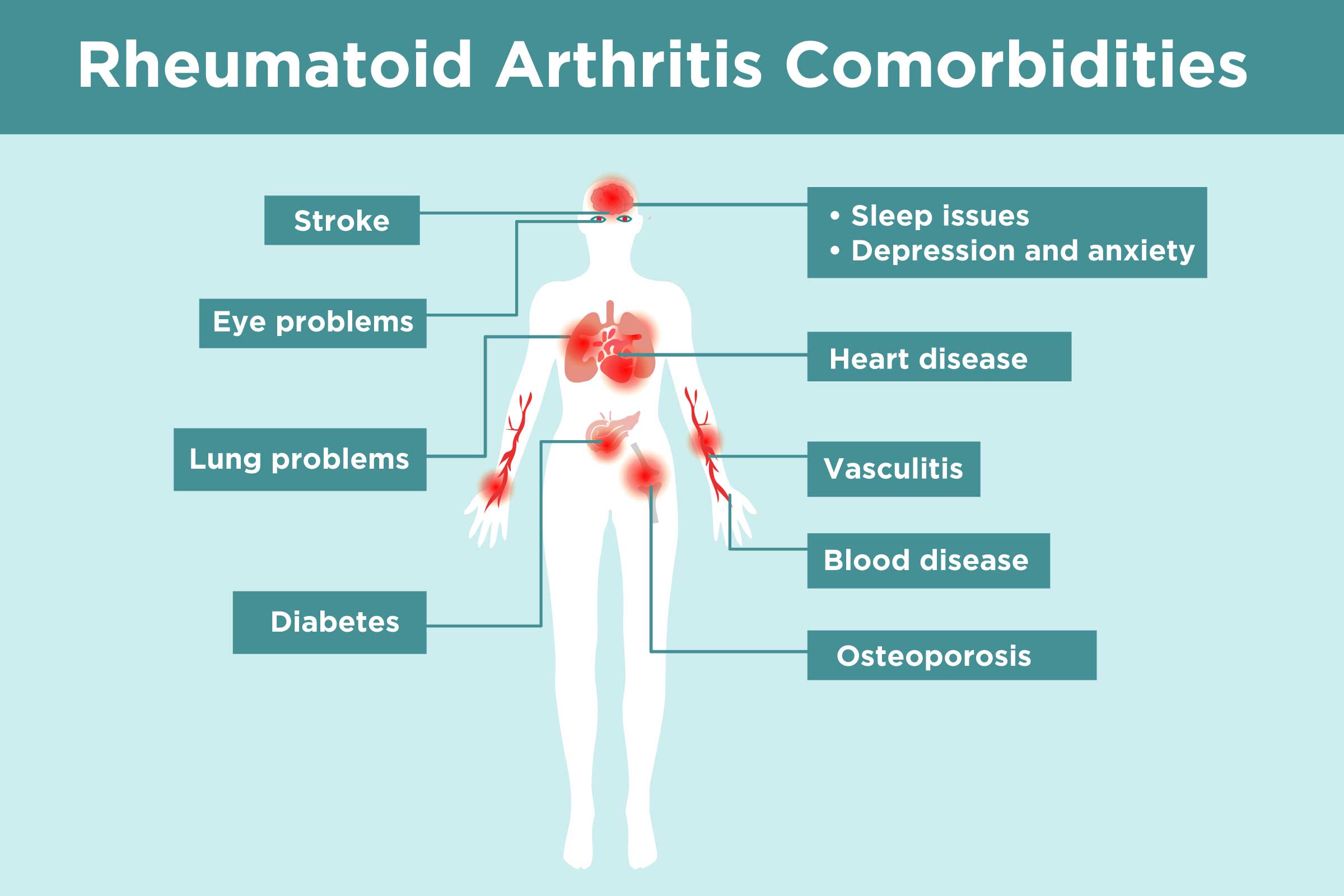


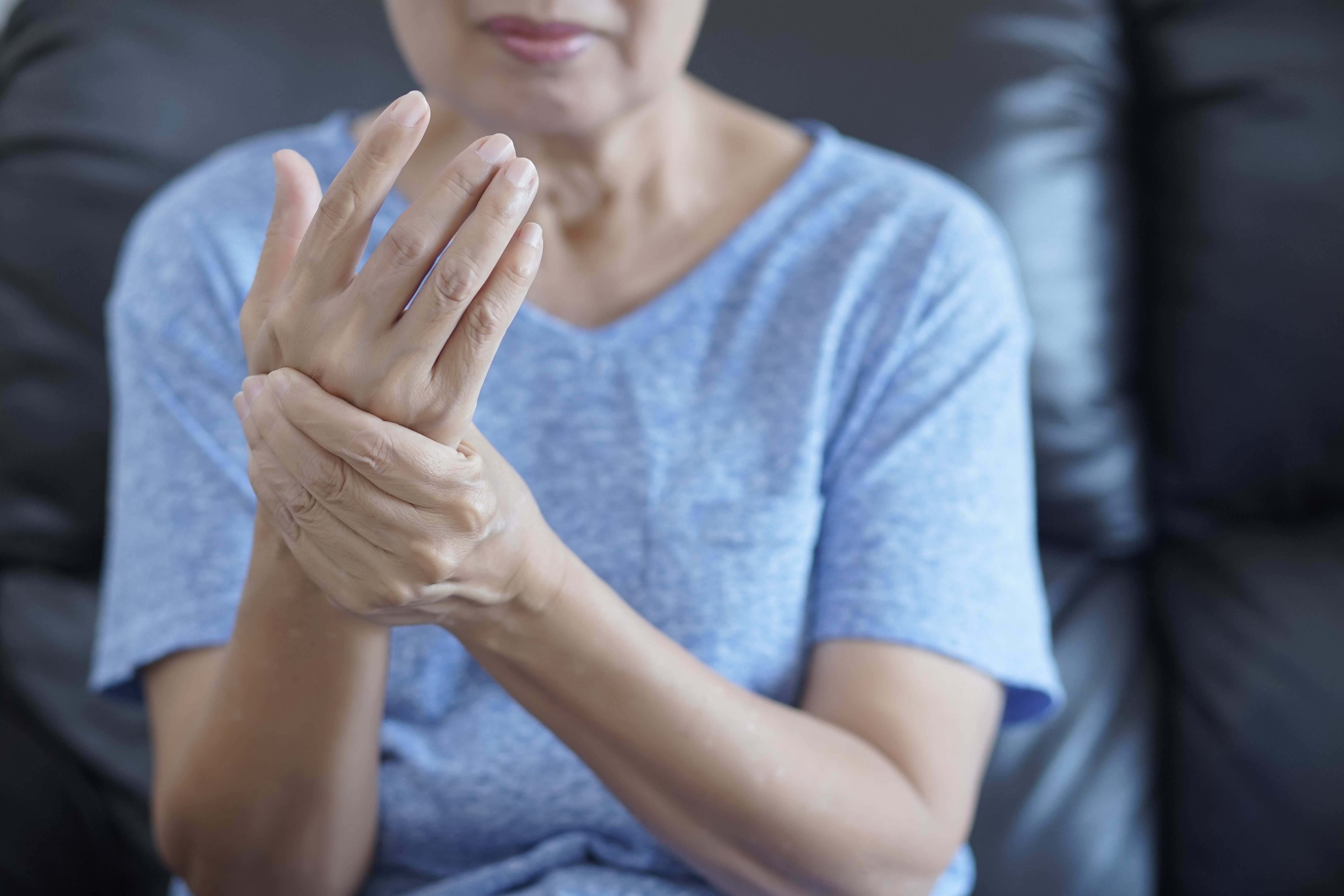_1.jpeg?fit=crop&auto=format)
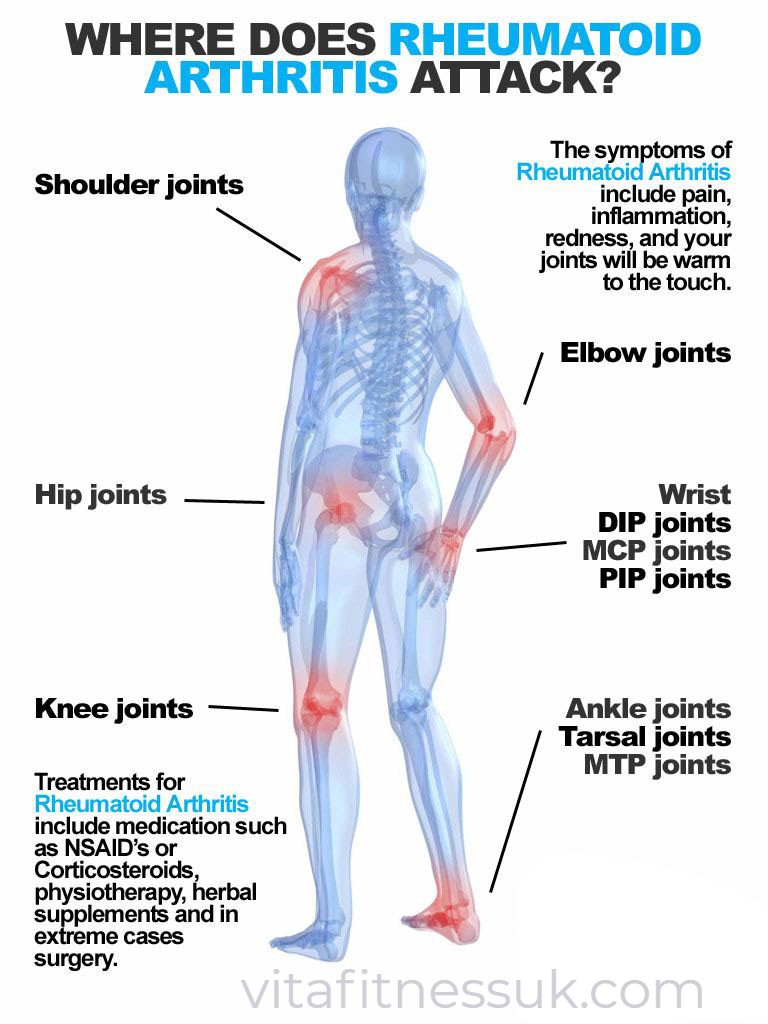 The concentration of IgM and IgG to the altered Fc site of IgG is growing (rheumatoid factors).
The concentration of IgM and IgG to the altered Fc site of IgG is growing (rheumatoid factors).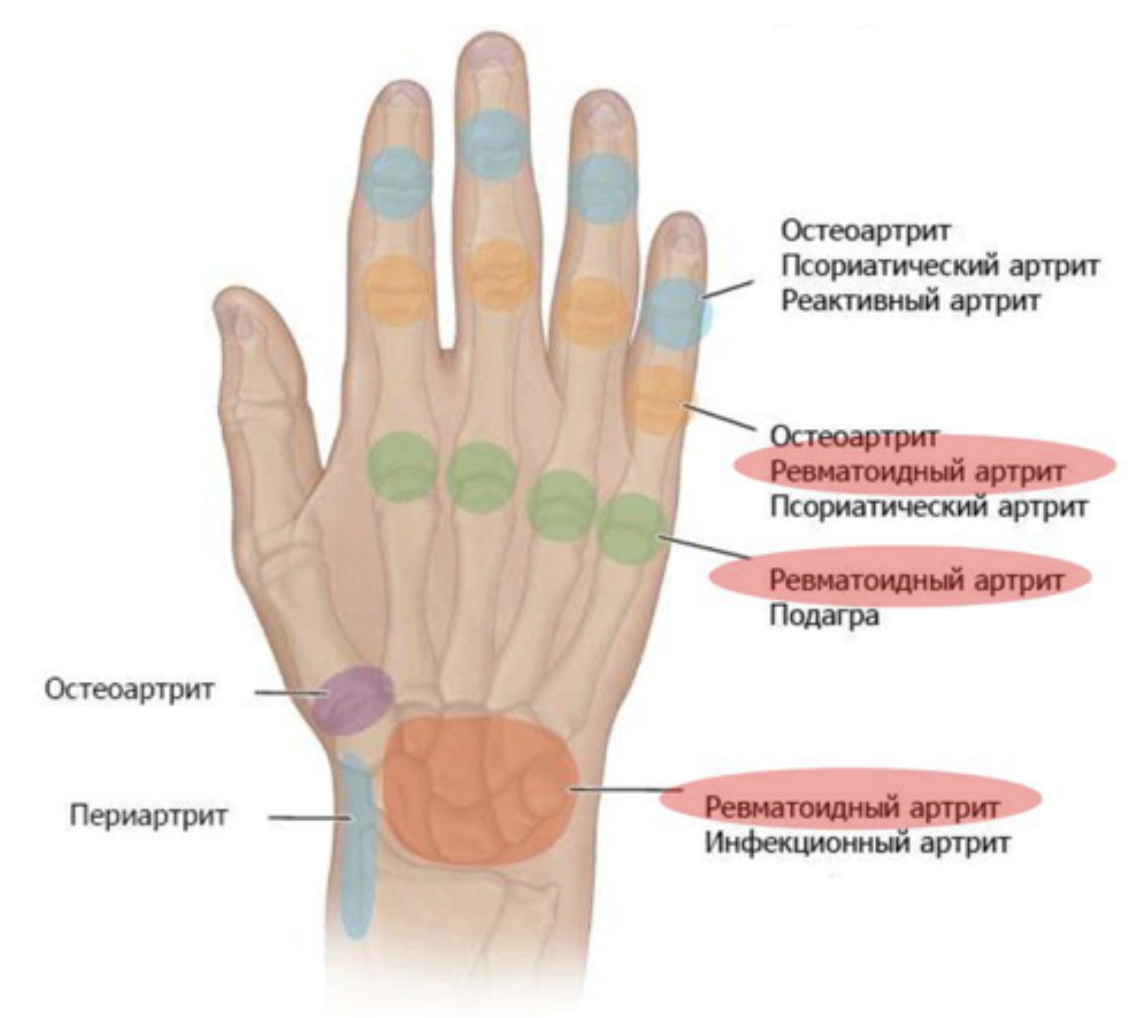
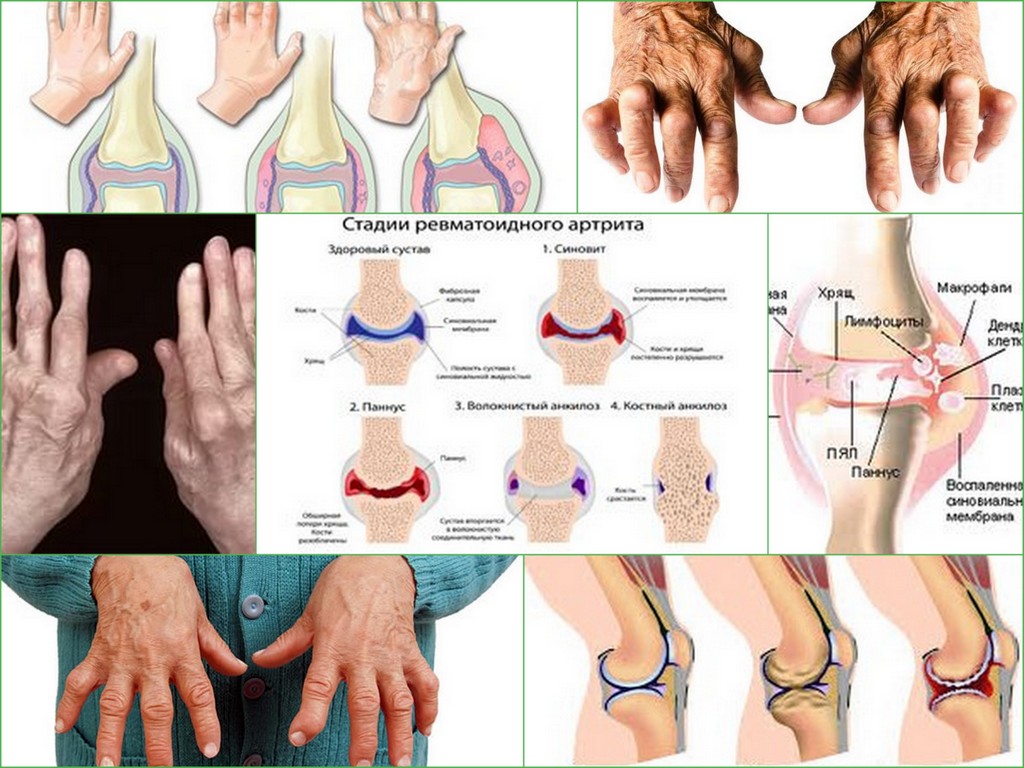 However, the indicator is not critical, since titers can be detected in other viral diseases and connective tissue pathologies. RF analysis confirms rheumatoid arthritis in combination with a positive test for ACCP.
However, the indicator is not critical, since titers can be detected in other viral diseases and connective tissue pathologies. RF analysis confirms rheumatoid arthritis in combination with a positive test for ACCP.:max_bytes(150000):strip_icc()/the-difference-between-rheumatoid-arthritis-and-lupus-2249883_final-6fb7c4f929754e52be1e5eaa9c5f0620.png)
 They reduce pain to some extent, slow down the progression of RA. May include inhibitors and blockers for IL-1, IL-6, TNF-alpha. They do not block the development of erosion and disease, therefore they are used as adjuvants.
They reduce pain to some extent, slow down the progression of RA. May include inhibitors and blockers for IL-1, IL-6, TNF-alpha. They do not block the development of erosion and disease, therefore they are used as adjuvants.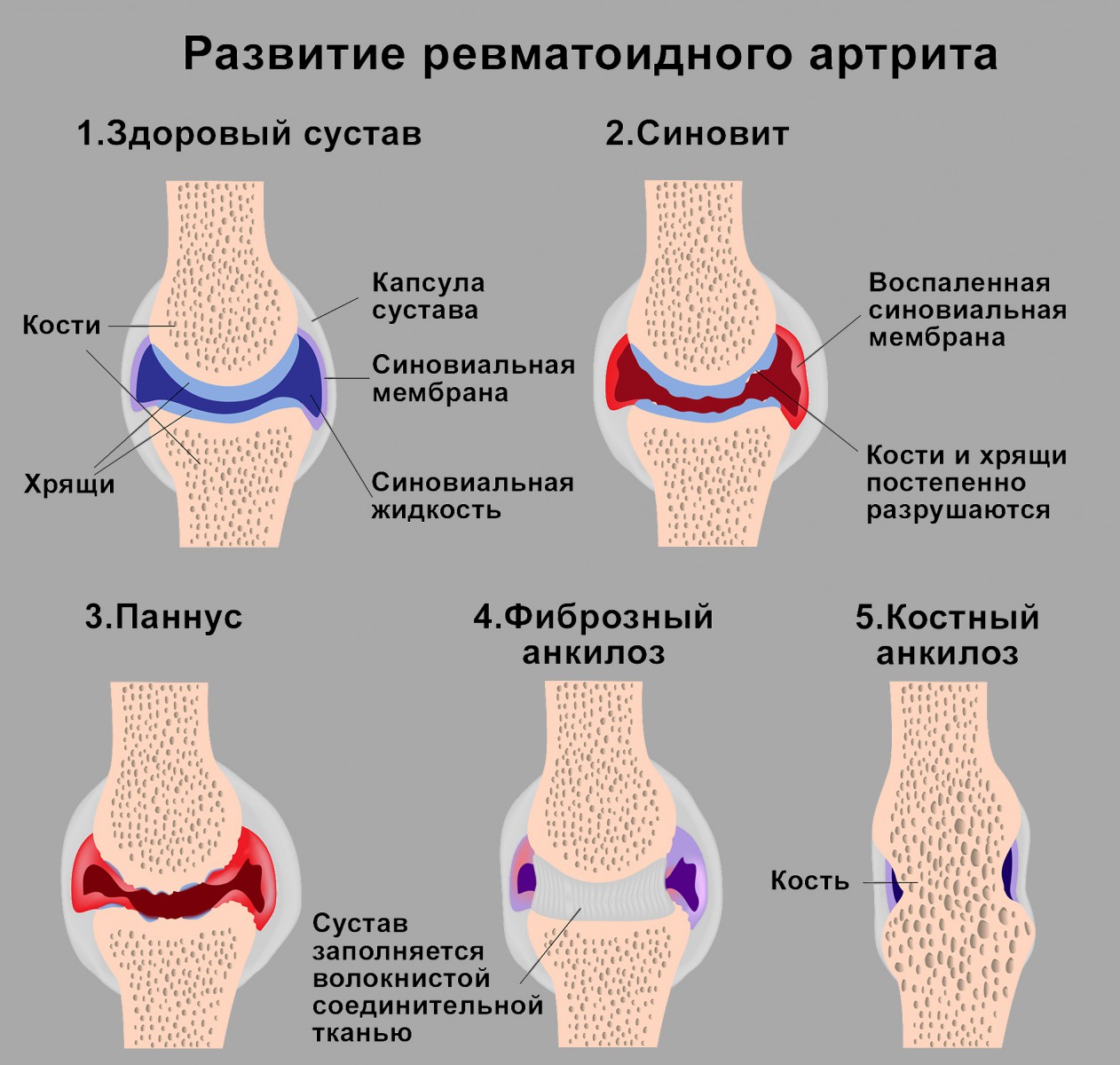 The doctor and the patient must weigh all the risks, conduct regular monitoring of the patient’s condition.
The doctor and the patient must weigh all the risks, conduct regular monitoring of the patient’s condition.